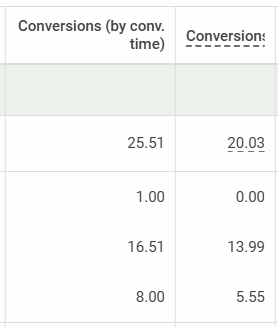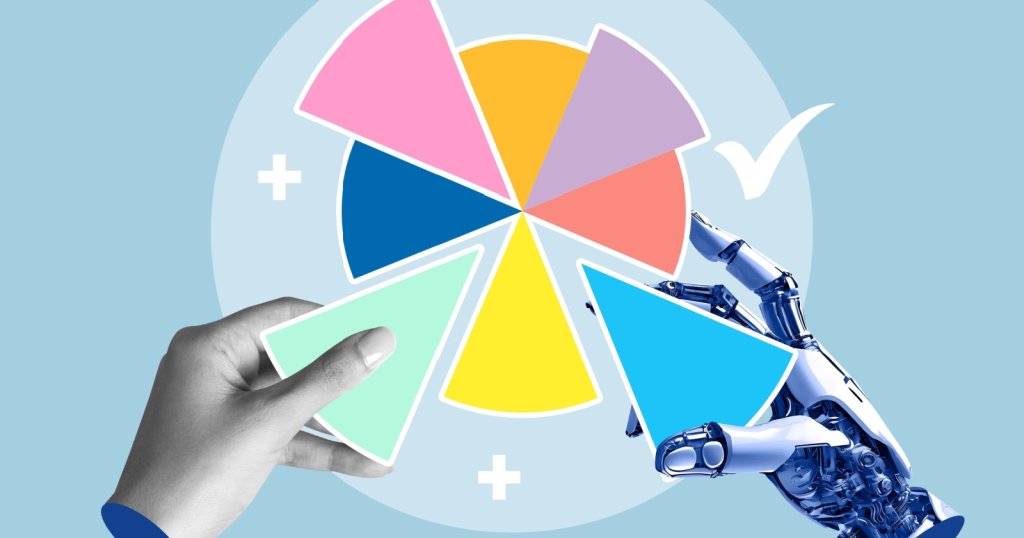Google Ads in 2025 looks nothing like it did in 2019. What used to be a hands-on, keyword-driven platform is now powered by AI and machine learning. From bidding strategies and audience targeting to creative testing and budget allocation, automation runs through everything.
Automation brings a lot to the table: efficiency at scale, smarter bidding, faster launches, and less time spent tweaking settings. For busy advertisers or those managing multiple accounts, it is a game-changer.
But left unchecked, automation backfires. Hand over the keys without guardrails and you risk wasted spend, irrelevant placements, or campaigns chasing the wrong metrics. Automation can execute tasks, but it still lacks an understanding of client goals, market nuances, and broader strategy.
In this article, we’ll explore how to balance AI and human oversight. We’ll look at where automation shines, where it falls short, and how to design a hybrid setup that leverages both scale and strategic control.
Table of Contents
Measurement First: Feeding The Machine The Right Signals
Automation learns from the conversions you feed it. When tracking is incomplete, Google fills the gaps with modeled conversions. These estimates are useful for directional reporting, but they do not always match the actual numbers in your customer relationship management (CRM).
 Chart by author, September 2025
Chart by author, September 2025Conversion lag adds another wrinkle. Google attributes conversions to the click date, not the conversion date, which means lead generation accounts often look like they are underperforming mid-week, even though conversions are still being reported. Adding the “Conversions (by conversion time)” column alongside the standard “Conversions” reveals that lag.
Also, you can build a custom column to compare actual cost-per-acquisition (CPA) or return on ad spend (ROAS) against your targets. This makes it clear when Smart Bidding is constrained by overly strict settings rather than failing outright.
For CPA, use the formula (Cost / Conversions) – Target CPA. The result tells you how far above or below the goal the campaign is currently hitting. A positive number means you are running over target, often because Smart Bidding is being choked by strict efficiency settings. Smart Bidding may pull back volume and still fail to reach efficiency, or compromise by bringing in conversions above target. A negative number means you are under target, which suggests automation is performing well and may have room to scale.
For ROAS, use the formula (Conv. Value / Cost) – Target ROAS. A negative result shows Smart Bidding is under-delivering on efficiency and not meeting the target. A positive result means you are beating the target, a signal that the system is thriving.
For example, if your Target CPA is $50 and the custom column shows +12, your campaigns are running $12 above goal, typically because the bidding algorithm is adhering too closely to constraints put in by the advertiser. If it shows -8, you are beating the target by $8, which can mean that the system could scale further.
To get real value from automation, connect it to business outcomes, not just clicks or form fills. Optimize toward revenue, profit margin, customer lifetime value, or qualified opportunities in your CRM. Train automation on shallow signals, and it will chase cheap conversions. Train it on metrics that matter to the business, and it will align more closely with growth goals.
Drawing Lanes For Automation
Automation performs best when campaigns have clear lanes. Mix brand and non-brand queries, or new and returning customers, and the system will almost always chase the easiest wins.
That is why human strategy still matters. Search campaigns should own high-intent queries where control of copy and bidding is critical. Performance Max should focus on prospecting and cross-network reach. Without this separation, the auction can route more impressions to PMax, which often pulls volume away from Search. The scale of overlap is hard to ignore. Optmyzr’s analysis revealed that when PMax cannibalized Search keywords, Search campaigns still performed better 28.37% of the time. In cases where PMax and Search overlapped, Search won outright 32.37% of the time.
The same problem arises with brand traffic. PMax leans heavily toward brand queries because they convert cheaply and inflate reported performance. Even with brand exclusions, impressions slip through. If you’re looking for your brand exclusions to be airtight, add branded negative keywords to your campaigns.
Supervising The Machine
Automation does not announce its mistakes. It drifts quietly, and you have to search for the information and read the signals.
Bid strategy reports show which signals Smart Bidding relied on. Seeing remarketing lists or high-value audiences is reassuring. Seeing random in market categories that do not reflect your customer base is a warning that your conversion data is too thin or too noisy.
Google now includes Performance Max search terms in the standard Search Terms report, providing visibility into the actual queries driving clicks and conversions. You can view these within Google Ads and even pull them via API for deeper analysis. With this update, you can now extract performance metrics, including impressions, clicks, click-through rates (CTR), conversions, and directly add negative keywords from the report, helping to refine your targeting quickly.
Looking at impression share signals completes the picture. A high Lost IS (budget) means your campaign is simply underfunded. A high lost IS (rank) paired with a low Absolute Top IS usually means your CPA or ROAS targets are too strict, so the system bids too low to win auctions. This tells us that it’s not automation that is failing; it’s automation following the rules you set. The fix is incremental: Loosen targets by 10-15% and reassess after a full learning cycle.
Intervening When Context Changes
Even the best automation struggles when conditions change faster than its learning model can adapt. Smart Bidding optimizes based on historical patterns, so when the context shifts suddenly, the system often misreads the signals.
Take seasonality, for example. During Black Friday, conversion rates spike far above normal, and the algorithm raises bids aggressively to capture that “new normal.” When the sale ends, it can take days or weeks for smart bidding to recalibrate, overvaluing traffic long after the uplift is gone. Or consider tracking errors. If duplicate conversions fire, the system thinks performance has improved and will start to bid more aggressively, spending money on results that don’t even exist.
That is why guardrails, such as seasonality adjustments and data exclusions, exist: they provide the algorithm with a correction in moments when its model would otherwise drift.
Auto Applied Recommendations: Why They Miss The Mark
Auto-applied recommendations are pitched as a way to streamline account management. On paper, they promise efficiency and better hygiene. In practice, they often do more harm than good, broadening match types, adding irrelevant keywords, or switching bid strategies without context.
Google positions them as helpful, but many practitioners disagree. My view is that AARs are not designed to maximize your profitability at the account level. They are designed to keep budgets flowing efficiently across Google’s limited inventory. The safest approach is to turn them off and review recommendations manually. Keep what aligns with your strategy and ignore the rest. My firm belief is that automation should support your work, not overwrite it.
Scripts That Catch What Automation Misses
Scripts remain one of the simplest ways to hold automation accountable.
The official Google Ads Account Anomaly Detector flags when spend, clicks, or conversions swing far outside historical norms, giving you an early warning when automation starts drifting. The updated n-gram script identifies recurring low-quality terms, such as “free” or “jobs,” allowing you to exclude them before Smart Bidding optimizes toward them. And if you want a simple pacing safeguard, Callie Kessler’s custom column shows how daily spend is tracking against your monthly budget, making volatility visible at a glance.
Together, these lightweight scripts and columns act as additional guardrails. They don’t replace automation, but they catch blind spots and force a human check before wasted spend piles up.
Where To Let AI Lead And Where To Step In
Automation performs best when it has clean signals, clear lanes, and enough data to learn from. That is when you can lean in with tROAS, Maximize Conversion Value, or new customer goals and let Smart Bidding handle auction-time complexity.
It struggles when data quality is shaky, when intents are mixed in a single campaign, or when efficiency targets are set unrealistically tight. Those are the moments when human oversight matters most: adding negatives, restructuring campaigns, excluding bad data, or easing targets so the system can compete.
Closing Thoughts
Automation is the operating system of Google Ads. The question is not whether it works; it is whether it is working in your favor. Left alone, it will drift toward easy wins and inflated metrics. Supervised properly, it can scale results no human could ever manage.
The balance is recognizing that automation is powerful, but not self-policing. Feed it clean data, define its lanes, and intervene when context shifts. Do that, and you will turn automation from a liability into an edge.
More Resources:
Featured Image: N Universe/Shutterstock

